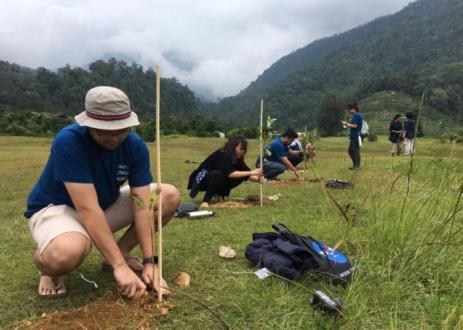Indonesia Zero Emissions Application (EMISI): Methodologies for Calculating Urban Transport Emissions and Tree Sequestration
Synopsis
This Technical Note describes the method within EMISI for calculating individual-level GHGs and air pollutant emissions from urban transport activities and then determining the necessary carbon sequestration through reforestation and afforestation.
Executive Summary
In recent decades, greenhouse gases (GHGs) and air pollutant emissions have increased due to land transport activities. This substantial growth has accelerated climate change and the deterioration of urban air quality, which have intensified serious hazards and have increased public health risks. Therefore, significant environmental action is urgently needed to mitigate the impact of climate change and air pollution on both the environment and human life. Globally, however, Indonesia has one of the largest populations of climate change deniers. Hence, it is crucial to establish a locally relevant platform—using Indonesia’s emissions factors and profiles—that can educate and empower Indonesians to take action to mitigate their transportation impact on climate change. Therefore, the Indonesia Zero Emissions Application (EMISI) was developed to help users easily calculate and learn how to sequester their GHGs emissions, starting with urban commuting and transport activities.
This Technical Note describes the method within EMISI for calculating individual-level GHGs and air pollutant emissions from urban transport activities and then determining the necessary carbon sequestration through reforestation and afforestation. The application uses the bottom-up approach to calculate carbon dioxide, sulfur dioxide, carbon monoxide, fine particulate matter, and nitrogen oxides emissions to make them personal, science driven, and trackable; this helps users understand how their travel activities contribute to GHGs and air pollutant emissions. For emissions sequestration, EMISI uses guidelines and methodologies adopted from the Intergovernmental Panel on Climate Change and the Clean Development Mechanism. This shows users how they can sequester their GHGs emissions by planting trees; it also provides the required number of trees for a specific species planted in a specific location.
This methodology could be adopted by various stakeholders in Indonesia—including government, nongovernmental and private organizations, communities, scientific experts, and the general public—helping them to embed it in their systems, develop their own calculators, and improve Indonesia’s carbon sequestration knowledge as well as add value to other research and development purposes. Despite utilizing the best available data and models, the methodologies in this Technical Note have several limitations and room for future improvement.
Related Sources
Projects

Emission Reduction and Sequestration Initiative/Inisiatif Pengurangan dan Penyerapan Emisi (EMISI)
Launch PlatformLaunch Platform Visit ProjectAn Indonesian platform that helps anyone learn, track and act on climate.
Part of Climate

